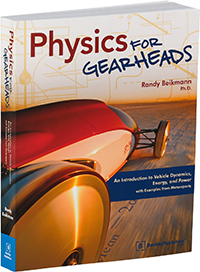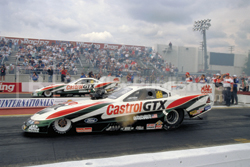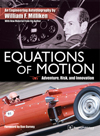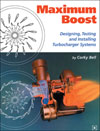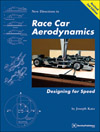|
Now Available! |
Physics for Gearheads
An Introduction to Vehicle Dynamics, Energy, and Power
|
There is no better way to learn physics than by having a problem to solve.
|
As a gearhead, you have a secret advantage when it comes to understanding physics: you see it at work every time you solve a problem with your car or watch a motorsports event. The experience you already have tuning cars or motorcycles is your virtual physics lab. Physics for Gearheads will show you that if you can learn about cars, you can learn about physics. Whether your interest is in increasing your engine's horsepower, getting more miles per gallon, or shaving tenths off your lap time on track day, you can use physics to gain insight into the problem and formulate a solution. Physics for Gearheads not only explains physics principles in language you can understand, it demonstrates how to use physics to your advantage. Note on the units of measurement used in Physics for Gearheads: This book outfits the reader to work in SI or British Engineering units. Chapters
Randy Beikmann is an automotive engineer working at the top of the industry. And he loves physics. Through his masterful teaching, physics doesn't look foreign - it looks like common sense. |
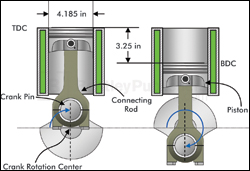
Chapter 3: Kinematics Applications - Section 3: Different Strokes
The mean (average) piston speed is a major factor in producing power. We calculate it for this typical NASCAR engine from its 3.25-inch stroke and rotating speed of 9500 rpm.

Chapter 12: Energy Basics
The Corvette of Gavin, Milner, and Westbrook converts kinetic energy to heat as it brakes hard for a turn, at the 12 Hours of Sebring, 2012.

Chapter 10: Dynamics in a Plane Basics - Section 6: Centripetal Acceleration
We calculate the lateral acceleration in a curve from a vehicle's velocity change after rounding a small portion of it.
|
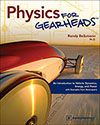
BSIN: GEBP
ISBN: 0-8376-1615-8 (ISBN-10)
ISBN: 978-0-8376-1615-5 (ISBN-13)
Permalink: http://www.bentleypublishers.com/c/GEBP
![[B] Bentley Publishers](http://assets1.bentleypublishers.com/images/bentley-logos/bp-banner-234x60-bookblue.jpg)
